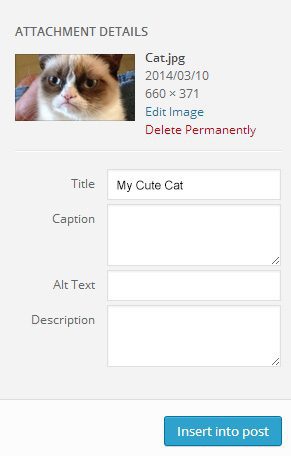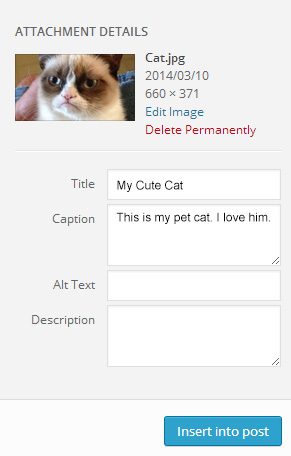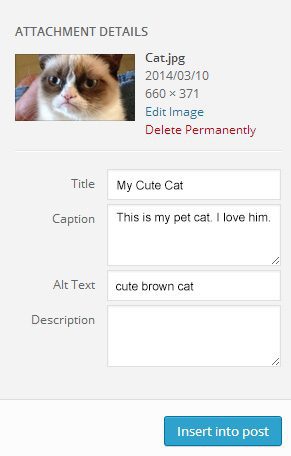
by Joseph Graves | Mar 10, 2014 | Articles, Technology, Tools, Workshed News
Images are essential to an effective website. Quality photos can mean the difference between a successful website and an ugly website that burns the retinas of it’s viewers.
Photos are especially important for websites that need to communicate anything visual; such as products, artwork, or services.
Here are a couple of websites that do a great job communicating visually with images:
www.spotify.com
www.littleco.com
Not only is it important to be posting big beautiful photos, it is equally important that they are properly optimized for the web. Not having properly optimized photos means you are probably missing out on potential visitors and sales.
Do your images provide Google and other search engines with the relevant information they need to be properly indexed? If not, how are people going to find them?
Are your photos too big? If so, they could be taking longer than necessary to load on phones and other mobile devices.
Why optimize your images?
Google can’t read photos… at least not very well. This is why you need to tell Google what the image is so that Google can correctly index and organize it.
Is that another photo of your cat with sunglasses? Or is that a photo of your Grandma’s famous green jello recipe? Google doesn’t know. You need to tell it.
Here are 5 important steps to optimize images for the web:
1. Image sizes
Before your photo is posted to the world wide web, it’s important that it be the right file size. If your images are too large, your visitors are not going to wait around for your website to load; especially mobile visitors. Images that are small in file size are essential for fast page load times. Unless you have access to expensive image editing software such as Adobe Photoshop, there are plenty of free online tools to help optimize image size; here is a great one.
2. Image Title Tag
Give your image a good title tag. The title tag is what the visitor is going to see when they highlight over the image with the cursor. Wordpress makes uploading and tagging images a piece of cake. Simply type in the title tag after uploading your image:

If you’re not using wordpress, and are updating your website like a dinosaur, the format goes like this:
<img src=”cat.jpg” title=”My Cute Cat”>
3. Image Caption
Add a caption tag to give your visitors a nice description or insight about your image. In WordPress, the caption is added directly underneath your image. Image captions are not used by Google, so only add if you want to give your visitors additional information.

4. Image Alt Tag
The Alt tag is especially important for SEO and Google indexing. Make a habit of always putting relevant keywords that describe your image in your alt tags. The alt tag will also be displayed in place of the image if the image link breaks and cannot be displayed. WordPress also has a handy field to add an alt tag:

<img src=”cat.jpg” title=”My Cute Cat” alt=”cute brown cat”>
5. Image File Name
When uploading any image, make sure it has a descriptive file name. A year from now when you or a visitor are searching for a particular image, which one do you think will be easier to find?
IMG_8692.jpg or cute-brown-cat.jpg?
These are 5 great ways to help optimize your website and get more traffic. Interested in more information on maintaining an effective website, sign up for our newsletter in the right sidebar.
Have any more image optimization tips? Please leave them in the comments below!

by Joseph Graves | Mar 4, 2014 | Articles, Financial Adviser
How to Pick Your Next Blog Post Topic for Financial Advisers
 Writing a blog post with any regularity is challenging. Writing for your business needs to generate results in order to justify the investment in time and effort. A few years ago one of the companies in my portfolio was in the news and I wrote a post about my thoughts on the potential consequences. Mainly I did it because I was sick of repeating myself to clients on the phone so I thought that writing a blog post about it would save me some time. While it may have saved me a little time and prevented some boredom, it wasn’t until several months later that I discovered the real benefit.
Writing a blog post with any regularity is challenging. Writing for your business needs to generate results in order to justify the investment in time and effort. A few years ago one of the companies in my portfolio was in the news and I wrote a post about my thoughts on the potential consequences. Mainly I did it because I was sick of repeating myself to clients on the phone so I thought that writing a blog post about it would save me some time. While it may have saved me a little time and prevented some boredom, it wasn’t until several months later that I discovered the real benefit.
The Long Tail
One afternoon while I was checking my blog stats instead of making calls, I noticed some search traffic related to the investment I had written about months before. It wasn’t much, but it was the first time I’d noticed organic traffic for something so specific. For months I’d get a hit or two every few days, nothing significant, but it was consistent. I didn’t realize it at the time, but I’d stumbled on to what’s now commonly referred to as “long tail keywords.”
By this time I’d already read Chris Anderson’s book, “The Long Tail: Why the Future of Business is Selling Less of More,” but I didn’t connect the dots between selling things and search terms. Essentially its the same thing. People are searching for something they want, be it products or information. Similar to the way you can find almost any product on Amazon…Google does the same for information.
Why It Matters
Google has an army of brilliant engineers trying to make sure you get good information when using their search engine. If you write something that is relevant to a question someone asks in Google you stand a good chance of getting found…assuming the question they are asking is specific enough IE a long tail question. In the example I used earlier, the particular investment I wrote about wasn’t well known, and when people started searching about it, there wasn’t much information available so my blog post was ranked high enough in the search results to get read.
Leveraging the Long Tail
I blogged sporadically over the next few years, but in 2013 I put what I learned about long tails to good use. An investment in my portfolio was making plans to go public and the information they were providing was vague and confusing. Recalling what I had observed a few years prior, I tried to identify questions people would be asking about the investment. Whenever the company released new information, I’d write a blog post. Eventually I created a special page on my website so people could easily read through all the information I’d collected.
Yreka!
At one point in my little experiment, I was ranked on the first page in the search results and I was getting over 500 page views a day. I realize that this isn’t much traffic in the grand scheme of things, but these were people who had no idea who I was…and they were asking me for advice. Some of my posts from that period had dozens of comments which led to multiple phone conversations with people who needed my help.
Your Turn
The next time you are trying to pick your next blog post topic, be sure to check your analytics to see if there are any search terms you can use as a starting point. If you don’t have that kind of data (contact me), try to recall recent questions from clients. Is there something there you can write about?
Let me know how it works for you, I’d love to hear your stories or answer any questions.
If writing blog posts isn’t your thing that’s cool too, we’d be happy to do it for you! Email us at [email protected] and we can set up a time to talk.

by Joseph Graves | Feb 19, 2014 | Articles, Business, Marketing, Technology, Workshed News
Well, you built a website or had someone build one, you added the url to your business card and now the online leads and sales are going to start rolling in, right? Well…not really. Many companies take the technological leap onto the Internet and don’t see the benefits. They get discouraged and this leads to a belief that you wasted time, money or both on a website. However, I am here to tell you that isn’t the case.
A website is successful when you take it from being two dimensional to three dimensional. You do this by giving your website a personality and realizing that you have customers out there, even if you can’t see them. Here are 3 things you can do to help get your website noticed!
#1 – Update Your Content
Many people don’t see immediate results from their website, so they neglect to keep their content relevant. Depending on the type of business you have, some ideas to keep your website up to date are text changes on your pages, adding products, updating your services, offering promotions or by creating blog posts. This not only tells people that you care about your business, it’s a great way to get noticed by the search engines as well, which helps your site move closer to the top of search results.
#2 – Promote Your Website In House
Making your website an interactive part of your business is essential to online success. Creating a steady stream of traffic will help drive your site to the top of the search engines. If you have services, have people schedule online for a small discount or offer other incentives to sign up for your service online. If you are selling goods, have sales that are website exclusive and promote this both IN store AND online so that people see that using your website can be a valuable resource and as a bonus, saves them money.
#3 – Use Social Media
On facebook, for every one person that likes your page – an average of 130 people see it, giving them a chance to like your page as well. The power of social media should not be underestimated and you can use this power for good. Think of creative ways to invite people to come to your website and conversely, offer people incentives to “like” your facebook page, follow you on twitter or connect with you on LinkedIn. By creating a greater web of contacts, you can reach more people with your promotions, your updates or…just to say hello.
![Websites That Cost Nothing & Baking Pies]()
by Joseph Graves | Feb 6, 2014 | Articles, Marketing
What do you do?
Part of what we do at Workshed is help our clients distill their value to potential customers into bite-sized chunks that are easily understood. It’s a lot easier to do for other people than it has been for our own business. In truth, we do a bunch of different things that are all intended to do one main thing – make you more money (not in the Ebenezer Scrooge sense, but in a healthy, sustainable sense). Communicating that succinctly has been challenging.
In nearly all of our initial meetings, the question of the cost comes up. While this is perfectly normal question, it’s not very helpful in making a decision about retaining our services. In reality, we perform our services and build websites that cost nothing. No, we don’t work for free, but the additional revenue and cost savings we create more than pays for what we charge.
Enter the analogy
Imagine the revenue of your business as a delicious pie (or a pie chart if you have no imagination). To explore the cost issue in this scenario, we’d essentially be asking you to give us a slice of pie. For some businesses, $5-10k might be a significant chunk of that pie, and with pie being so delicious, they don’t want to share. We understand your aversion to pie sharing in this situation…we are businesses owner too and have been asked to share our pie many times. That’s why we became bakers.
Rather than ask for a piece of your existing pie, we help you bake a bigger one. A pie large enough to give us a slice and still have more leftover than the pie you started with.
We bake bigger pies
What’s our recipe? Simple, we focus on the result rather than just one or two ingredients like the flour or baking soda (which are not delicious on their own). We combine our ingredients (websites, design, photography, marketing, social media, video production) to bake a delicious pie for your customers.
Now you know what we do. Anyone hungry?
Order a Pie

by Joseph Graves | Feb 5, 2014 | Articles, Business
 You are at the heart of your business. Your company most likely began with a dream and your willingness to work hard to make that dream a reality. Your passion was channeled into creating logos and an identity to define who you are and what you will be contributing to the marketplace.
You are at the heart of your business. Your company most likely began with a dream and your willingness to work hard to make that dream a reality. Your passion was channeled into creating logos and an identity to define who you are and what you will be contributing to the marketplace.
However, more than likely, when you began to run your business, dreaming quickly became a thing of the past and the day to day tasks became the true reality. Sometimes, in order to be successful we have to push our dreams and desires aside so that we can manage the nuts and bolts of business. Once business begins to get busy, that becomes the most time consuming part of each day because the finished product or service is what will pay the bills.
Although time passes and your company evolves, your days are filled with goods and services, orders, management tasks, financials and more. You know the website that you created six years ago needs to be updated and the logo colors don’t reflect who you are anymore. Even though you know it is important, you aren’t able to make this stuff a priority right now.
Then you call Workshed…
We come in and reignite that passion in you. We put you back at the heart of your business, but take care of the work. Now, it’s our job to make your dream the reality so that your business can catch up with your imagination. Relax, you’ve earned it.

by Joseph Graves | Jan 24, 2014 | 30 Day Blog Challenge, Articles
We believe in using inbound marketing to attract clients rather than ‘interruption marketing’ where you pester customers to buy from you. Think of inbound marketing as Connection Marketing. You connect with your ideal customers by helping them.
How does inbound work?
It starts with knowing your goals.
- Who are you hoping to attract? (Ideal customer)
- Where do they live on the internet/social media? (Demographics, gender, lifestyle, etc)
- How do you deliver meaningful content to them? (Content strategy)
- How is that content created and distributed? (Who does the work)
The Plan
Next we create a plan for meeting the defined goals. We determine when and how the content will be delivered then create the infrastructure to deliver it to our target audience. The keys to effective infrastructure are:
- A robust, mobile-responsive WordPress website typically built on a supported framework that complies with web standards (search engine friendly)
- Social Media platforms used by your ideal customer/clients with links to and from your website
- Email marketing campaigns with great analytics like MailChimp
- Website analytics and reporting
Content is King
With the right infrastructure in place, it’s time to create content. Our agency makes awesome content that connects with your ideal customer. We determine the best medium to communicate your message; video, photography, articles, e-books, white papers, newsletters and more. Then we distribute it via our infrastructure and continually measure the results.
That which is measured improves
Next, we measure and report the results. Since the data is gathered in real-time, we can quickly see what is working well and what isn’t and make adjustments fast. Being nimble ensures that our client’s marketing budget is being maximized and that we’re generating a real ROI (return on investment).
Nothing in life is a sure thing (except death and taxes perhaps), but inbound marketing is pretty darn close to a sure thing when it comes to bringing in more business from the customers you want. We’re ready to help you grow with inbound marketing. Let’s talk.






 Writing a blog post with any regularity is challenging. Writing for your business needs to generate results in order to justify the investment in time and effort. A few years ago one of the companies in my portfolio was in the news and I wrote a post about my thoughts on the potential consequences. Mainly I did it because I was sick of repeating myself to clients on the phone so I thought that writing a blog post about it would save me some time. While it may have saved me a little time and prevented some boredom, it wasn’t until several months later that I discovered the real benefit.
Writing a blog post with any regularity is challenging. Writing for your business needs to generate results in order to justify the investment in time and effort. A few years ago one of the companies in my portfolio was in the news and I wrote a post about my thoughts on the potential consequences. Mainly I did it because I was sick of repeating myself to clients on the phone so I thought that writing a blog post about it would save me some time. While it may have saved me a little time and prevented some boredom, it wasn’t until several months later that I discovered the real benefit.



 You are at the heart of your business. Your company most likely began with a dream and your willingness to work hard to make that dream a reality. Your passion was channeled into creating logos and an identity to define who you are and what you will be contributing to the marketplace.
You are at the heart of your business. Your company most likely began with a dream and your willingness to work hard to make that dream a reality. Your passion was channeled into creating logos and an identity to define who you are and what you will be contributing to the marketplace.